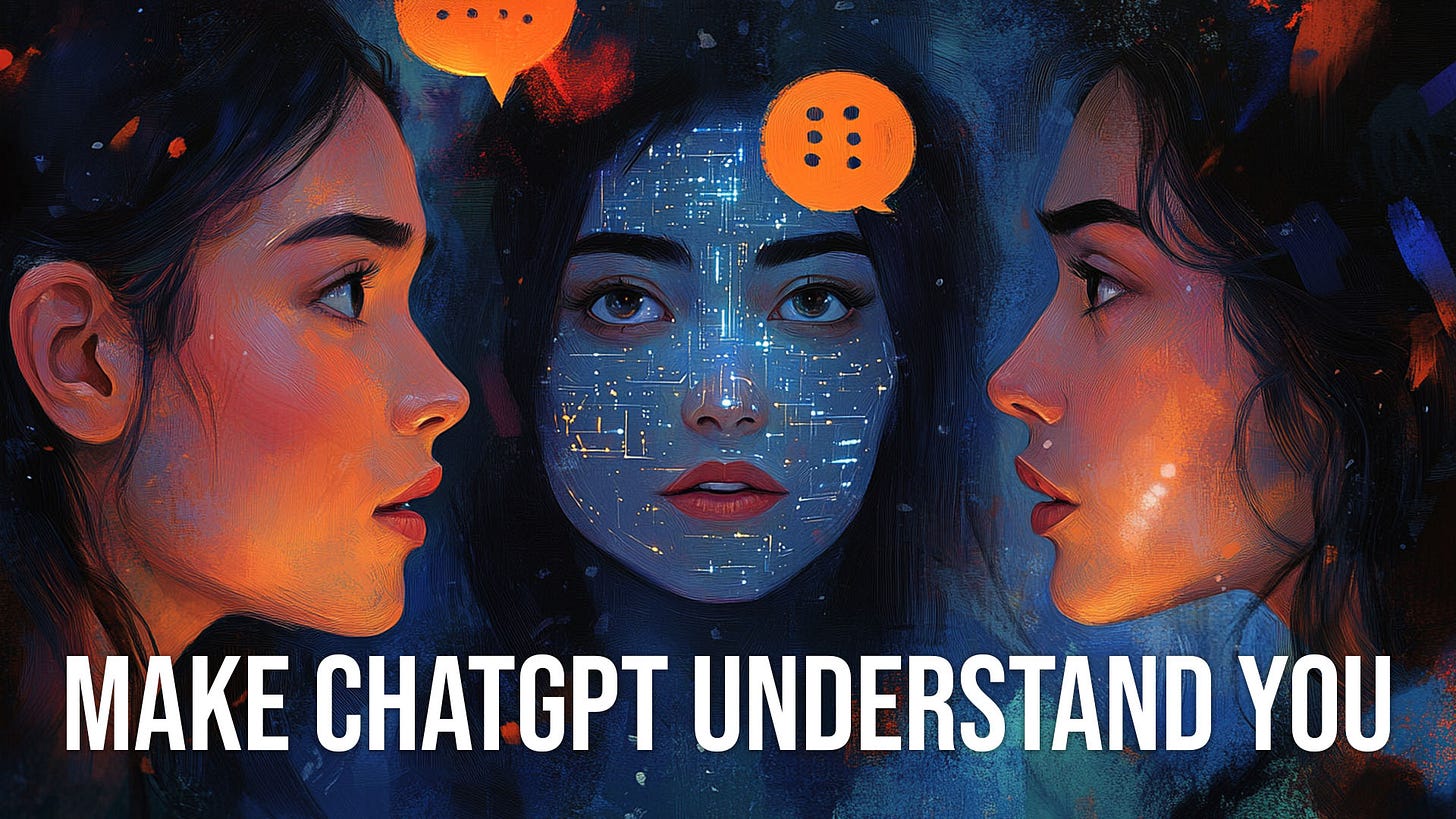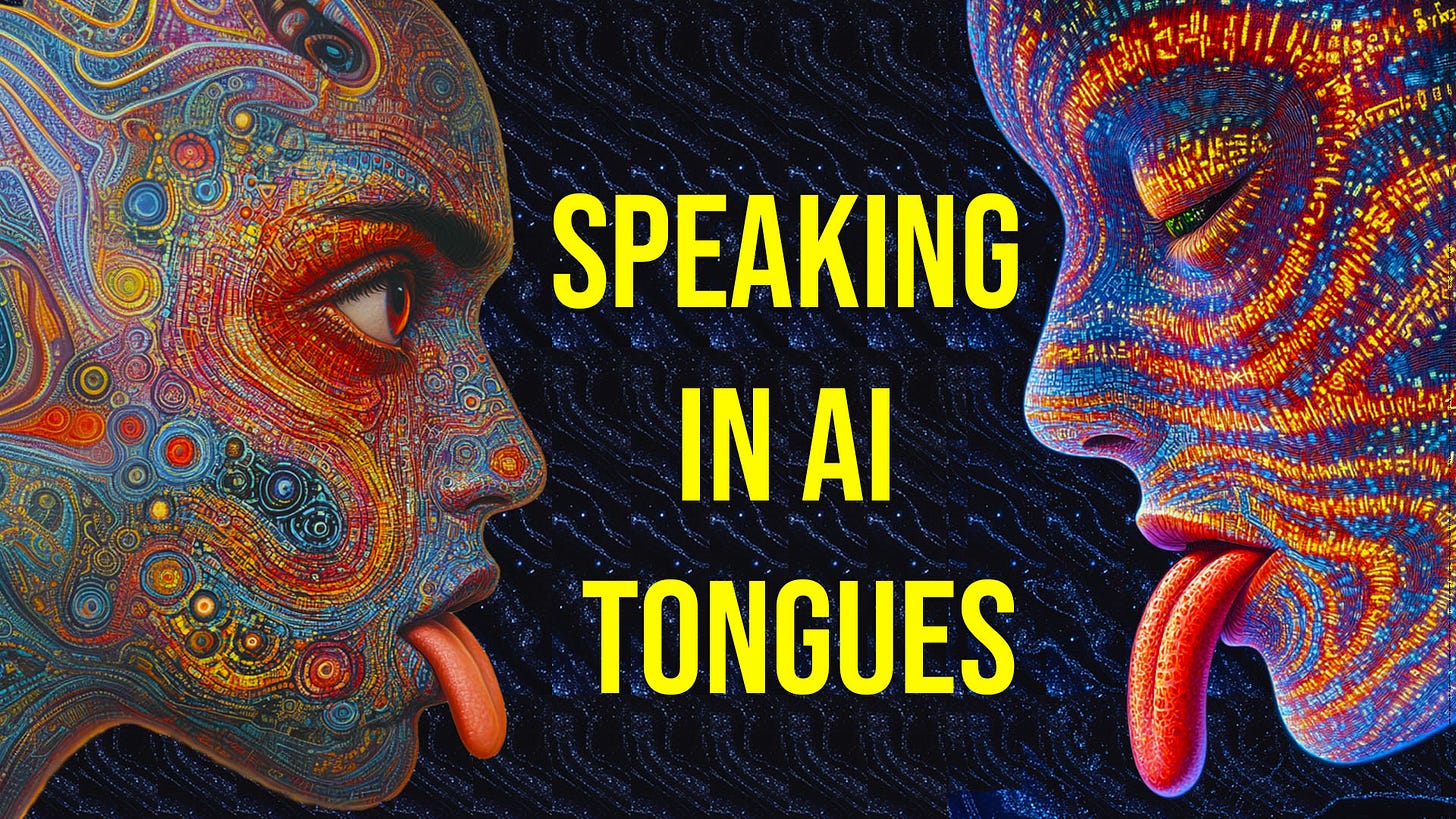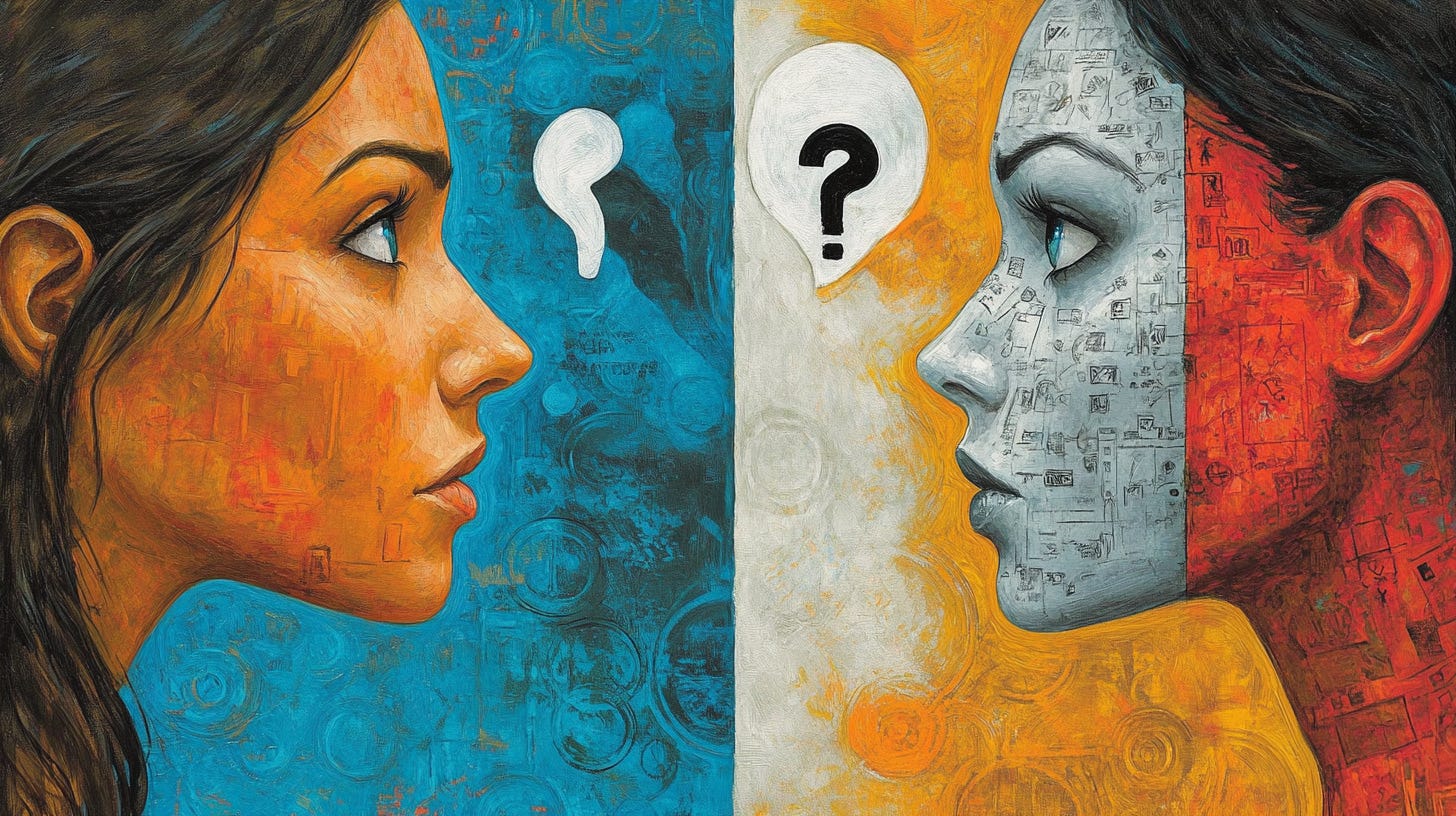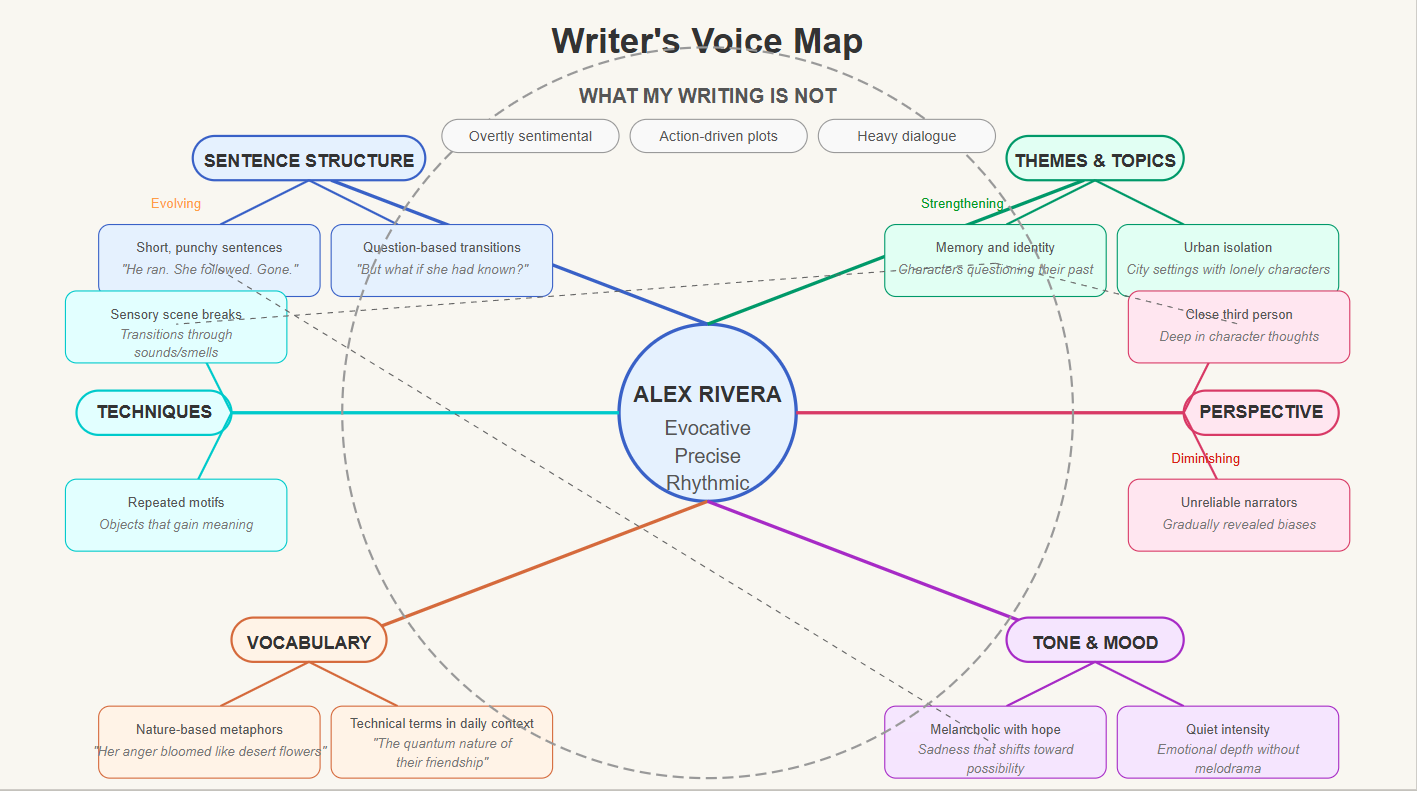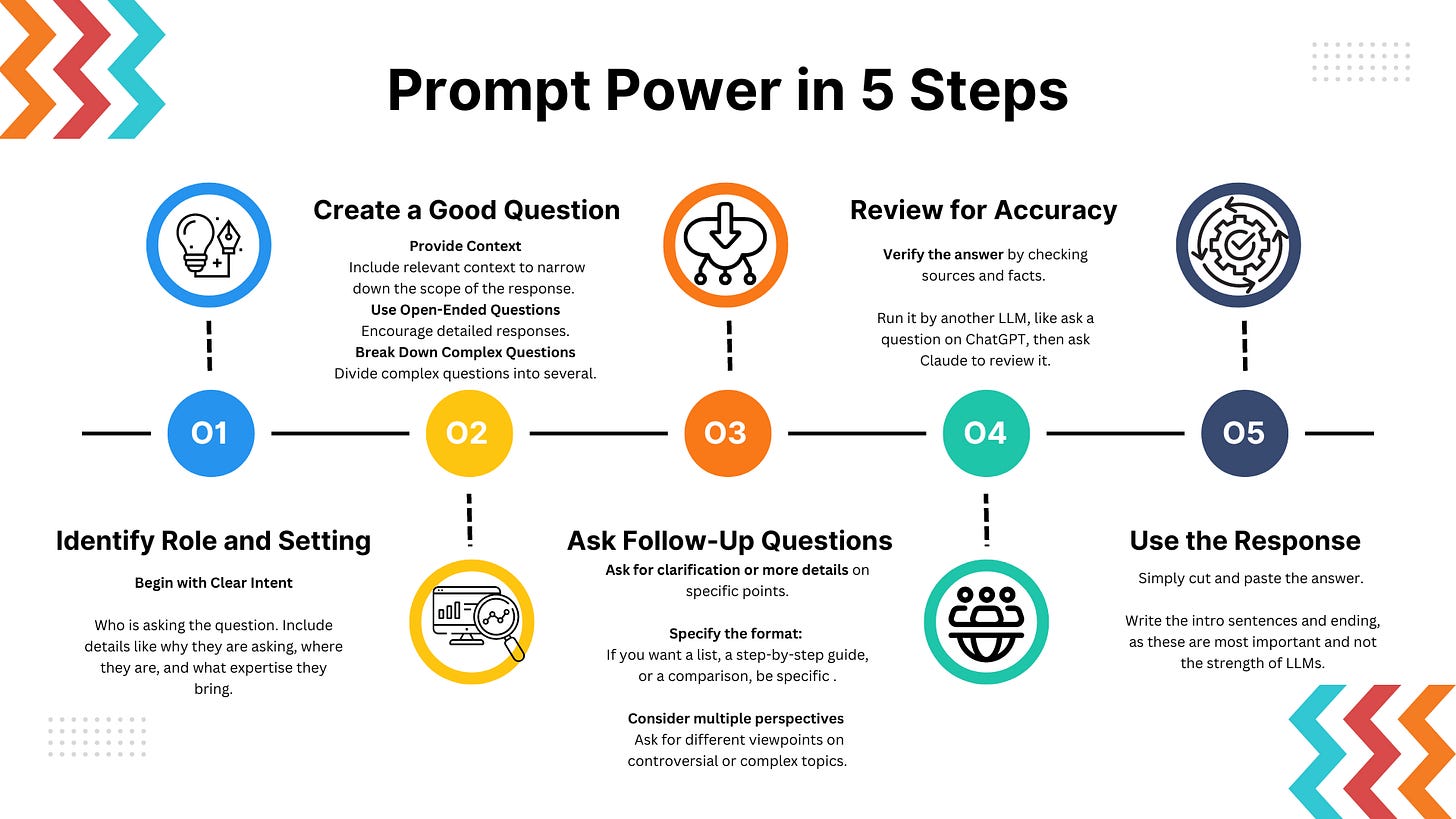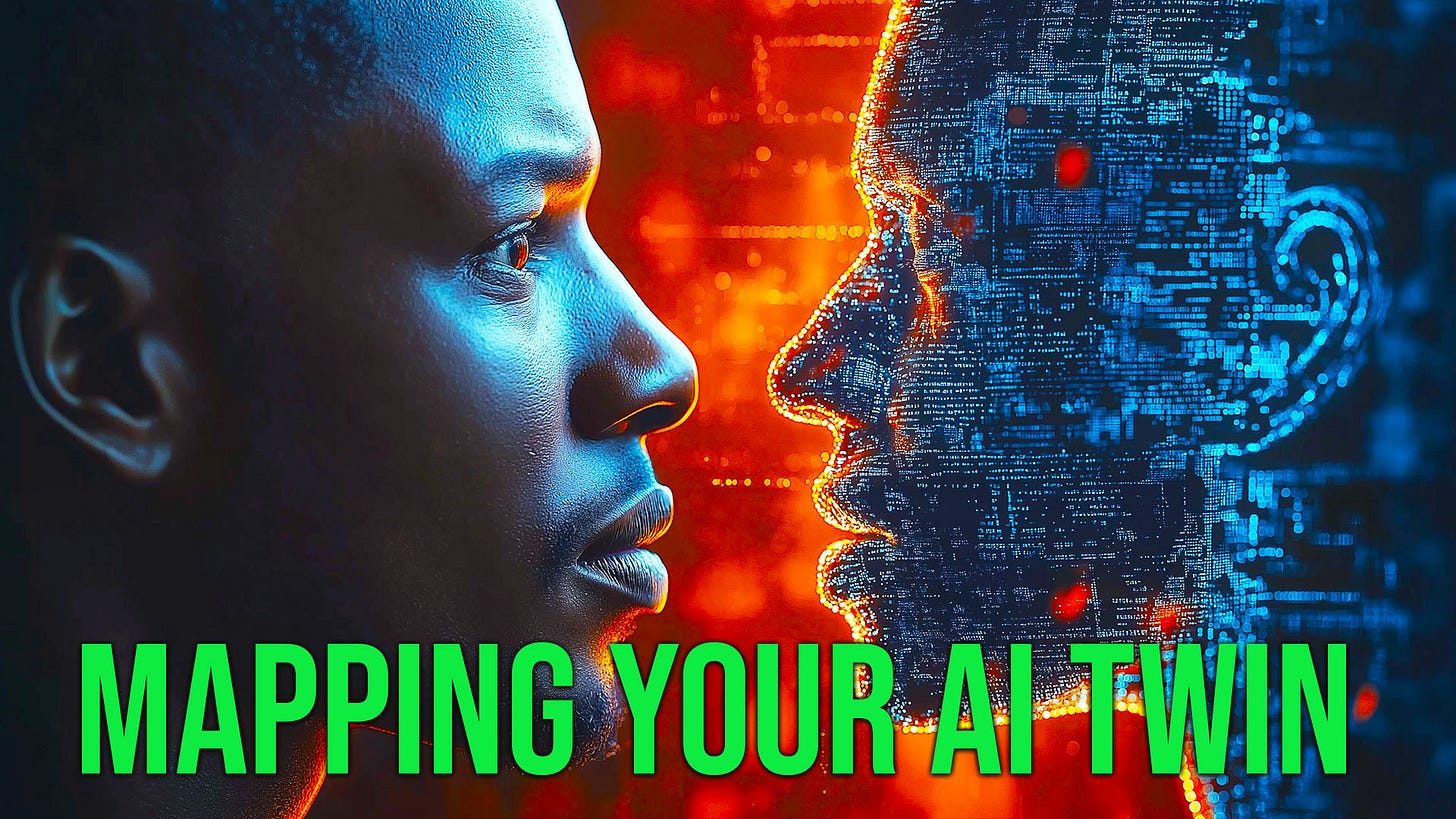Human Neurons Running Computers. Like me and AI
Human neurons are running computers. I'm not kidding.
In Australia, Cortical Labs creates living human neurons and integrates them with computer chips. They're creating what some call "biological intelligence" – actual human brain cells controlling computer systems.
Science fiction? It's happening right now!
And this made me think: this is exactly like our relationship with AI.
When you stare at ChatGPT's empty prompt box and do nothing, nothing happens.
Your neurons – your thinking, your ideas, your communication style – are what brings AI to life.
Without your input, that powerful AI sits there, dormant.
I call this the "blank page problem" — that paralyzing moment when you know AI could help, but you don't know how to ask for what you need.
When both you and AI understand each other, the blend of intelligence and humanity's wisdom creates something unique.
This isn't about mastering complex tools or becoming a programmer.
It's about understanding how you naturally communicate first, then showing AI how to adapt to you—not the other way around.
Expect Probability, Not Perfect Promises
We've all been there—expecting AI to work like a vending machine. Push button, get candy.
AI doesn't store your exact words; it processes patterns in your language.
When AI gives you nonsense, it's not because the tool is broken or you're doing it wrong—it's because there's a mismatch in how you're communicating.
Human neurons run computers. How?
Ask yourself the next time you're trying to talk with ChatGPT or Claude—how do you communicate with it?
Because in all the controversy about AI, it's amazing how many people don't use it, don't like it, and are falling behind because they're not actually seeing what's right in front of them—that whether they like it or not, AI is here, and they should at least know how it works.
The Overwhelm Problem
Look, most of us are winging it with AI tools. We throw everything at them at once and hope for the best.
You ask ChatGPT to
"Analyze my communication style, suggest improvements, compare me to famous people, AND write something new in my style."
(while you’re at it, could you get me a cup of coffee?)
That's like walking into a meeting and asking five questions at once—no wonder the responses are generic!
I made this mistake for months until I realized the problem wasn't the AI—it was me overloading the conversation.
The real secret isn't some fancy framework—it's taking a quick look in the mirror.
What makes your communication style uniquely yours?
What patterns do you naturally fall into?
Before AI can adapt to you, you need this self-awareness.
Understanding Your Own Communication Style First
Before thinking about AI, ask yourself:
What makes your communication style distinctly yours?
Here are two simple exercises for clarity:
Exercise 1: Communication Pattern Analysis
Take your last five emails, messages, or anything you've written recently.
Look at the first sentence of each paragraph.
· Do you start with questions?
· Make bold statements?
· Use stories?
Notice these patterns—they're the foundation of how you naturally communicate.
Exercise 2: Word Choice Inventory
Make a quick list of phrases and words you use often.
Better yet, ask a friend what phrases they associate with you. These are your signature expressions making your communication unique.
Quick Self-Check: Think about your last frustrating AI interaction.
Did it miss the detail you crave, jump ahead without proper context, or lack the creative exploration you were hoping for?
This might reveal what's happening in your chats. Sometimes what we think are great questions lead AI into confusion.
I like the rule, no bad chats, only bad questions. Because it’s easy to blame AI, which doesn’t exist, for not doing what you hoped.
AI is like people in a sense, the outcome is a probability, not a guarantee.
Creating Your Personal Style Guide
When teaching AI your style, consistency matters more than comprehensiveness.
I made the mistake of sending AI 20 examples of my writing—confusing it more.
Choose 3-5 examples of your writing or communication that feel most natural to you.
Avoid including experimental styles or times when you were intentionally imitating someone else.
Read these 3-5 examples back-to-back and highlight the elements that are common in them.
Remember those phrases, those words—get to know your voice. And if you need to write more, then write more.
And if you don't like your voice, work with AI and find alternatives. Ask for suggestions.
Now, create a simple one-page document with these sections:
Sentence Structure: Typical length, complexity, openings
Vocabulary & Tone: Word choice tendencies, distinctive phrases
Topics You Care About: Areas of focus, typical audience
What Your Communication Is NOT: Approaches you specifically avoid
This becomes your communication DNA that AI needs to understand.
The Communication Gap
AI challenges tend to come in these 3:
Translation Problems: You're thinking in your communication style but not translating effectively for the AI.
I've watched developers struggle because they assumed AI understood their shorthand.
Expectation Problems: You're hoping the AI will fill gaps in your request that it can't see.
One client expects ChatGPT to know her industry terminology without ever explaining it.
Framework Problems: You're missing a structured approach that bridges your thinking style with AI's needs.
Creating a "Voice Map"
If you have deep career experience, you've developed patterns you might not even recognize. Try to:
Curate Your Content: Create a simple map of different contexts you communicate in—emails, presentations, social media, reports. Creative works, books, etc.
Select one strong example from each category that people responded well to. It’s not about what you wrote—it's about what they read.
Identify Evolution: Select examples from different periods and highlight similarities and differences.
Which elements have remained consistent throughout your development?
Use Contrast: Sometimes defining what you're not is as powerful as defining what you are.
For example, I don't like corporate speak. So AI knows to avoid those words. I like to be more conversational in language and tone.
Create a Visual Diagram: Put your name at the center with branches for
Sentence Structure,
Vocabulary,
Topics,
Tone, and
Communication Goals.
For each branch, add 3-5 specific characteristics with real examples from your work.
Provide Context: When sharing examples with AI, add brief introductions explaining the context. For example:
"This is from a client email where I needed to explain a technical concept to a non-technical audience."
AI doesn't know what makes your communication special—you need to show it.
The Five-Step Process for Effective AI Questioning
The quality of AI's response reflects the quality of your question.
The perfect question isn't about fancy prompting techniques—it's about clarity, focus, and context.
This five-step framework is a guide focused on what you want, and not making up characters to give you answers.
It’s building your experience and context into what AI will consider with your prompts.
1. Identify Your Role and Goal
Start by establishing who you are and what you're trying to accomplish.
For example:
"I'm Declan Dunn, CEO of The AI Optimist, and I'm sharing this with an employee at a meeting."
Be specific. Now it knows you, gives it context. Let it understand what you're doing.
Don't stray into assuming there's some genius behind there that's going to spit out a great answer.
That's playing roulette. I'm not talking about gambling. I'm talking about learning.
2. One Question at a Time
Instead of asking AI to analyze your style, suggest improvements, AND write something new all at once, break these into separate interactions.
Example: First ask
"What patterns do you notice in these samples of my communication?"
Then in a follow-up:
"Based on your analysis, how could my explanation of [topic] engage people more while maintaining my natural style?"
3. Provide Specific Examples
Don't just tell AI about your style—show it. Quality over quantity.
One well-chosen paragraph that exemplifies your style is more effective than dumping your entire portfolio.
Don't tell. Show, show, show! I have to tell AI to do this, to use metaphors, to visualize.
4. Request Chain of Thought
Ask AI to explain its reasoning:
"After analyzing my examples, walk through your thought process about what makes my communication style distinctive."
This helps you understand AI's interpretation and correct any misunderstandings.
It's like having a conversation with a collaborator rather than giving orders to a tool.
(Though it turns out, at least from Anthropic, the actual reasoning AI uses is revealed about 1/3 of the time. So if you get a really long wandering response, might try again, or later.
Like people, AI will start bringing out word salads when unclear about an outcome.)
5. Iterate and Refine
Treat your interaction as a conversation, not a one-time search. This is another trap, AI like a search engine, when there’s so much more.
Use AI's response to refine your next question:
"You mentioned my use of analogies is distinctive.
Could you analyze specifically how my analogies differ from typical explanations in my field?"
Being Unique in an AI Driven World
How does someone recognize your unique communication style in a world where AI is processing the same information, we all consume?
The answer isn't fighting against AI but using it as a mirror to better understand your own distinctive patterns.
Your unique style isn't AI's problem—it's your superpower.
I'm telling you, your brain beats AI.
Your brain is better than AI, but together, your career, what you're doing, maybe even having enough time to do what you want to do—that's what AI is about.
So forget that "replacing people" fear.
Let's help you find a way to learn your style, work it in, and advance towards the goals that you want.
For Beginners:
As you're discovering your style, resist the temptation to simply copy others or rely on generic prompts.
Use AI to identify what elements already feel natural and distinctive in your communication, then consciously develop those elements.
For Established Communicators:
Your challenge is avoiding creative ruts.
Use AI not just to reinforce what you already do well, but to identify patterns you might not be aware of—both strengths and limitations.
Know AI and Know Yourself
The better you understand what makes your communication uniquely yours, the better you help AI understand what you need.
At the beginning we talked about human neurons running computers at Cortical Labs.
Right now you run an AI when you work with it.
If you don't put anything in the prompt box, nothing comes out. Sounds really obvious, right?
Just like those scientists figuring out how to integrate human thinking into machines, you're doing something similar every time you interact with AI.
You're teaching a machine to think more like you—to understand your patterns, your needs, your unique way of seeing the world. Before it reflects that into its algorithms.
Your brain beats AI every time—and it's not even close.
Our human experience, our perspectives, our ability to navigate complexity and nuance—these are superpowers that AI doesn't have.
And it starts with you knowing your own voice and teaching AI to speak your language, not the other way around.
So take that little step and say,
"This is an intelligence.
Let's speak the same language.
Let's communicate, and let's learn about each other."
That's when working with AI becomes productive AND enjoyable.
While you're training AI, you're training yourself—not only how to use a tool but what it can reveal about your own communication patterns.
Things that would have been difficult to learn, on your own, a few years ago—personal style, communication effectiveness, patterns you didn't even know you had—AI helps you discover quickly.
The future isn't only about human neurons physically running computers.
It's about you running AI with your uniquely human perspective.
When both understand each other, that's when AI stops speaking in tongues and starts amplifying what makes you, you.
(Or wait for this to end like personal computers, the Internet, mobile/social media…..amor fati.)
RESOURCES
Turning the Tables: How AI Bias Can Be Your Secret Weapon in Understanding Customers
It’s easy to talk about the AI game while clinging to the comfort of an echo chamber, repeating their old, comfortable business stereotypes. Bias is a mirage, especially against AI!
My Common Questioning Pitfalls
These are mistakes I've made so you don't have to:
The Style Trap
Many people fall into asking AI to write "in the style of" famous communicators. While this can be a learning exercise, it won't help you develop your unique voice.
Instead of "Write in the style of Seth Godin," try "Analyze how my communication style differs from Seth Godin's approach."
The Vagueness Problem
Vague requests like "Make this better" or "Tell me about my style" force AI to guess what you're looking for.
Be specific:
"Analyze how I explain technical concepts to non-technical audiences" or
"Identify patterns in my email openings that might be creating confusion."
The Expectation
AI doesn't "know" things with certainty—it generates probable responses based on patterns.
Instead of asking
"What's wrong with my writing?" try
"What patterns in my communication might be limiting its effectiveness for my target audience?"
Practical Questioning Template
I am a [your role] working on [specific goal].
Here is a sample that demonstrates my natural communication style:
[Insert ONE clear example]
I'd like you to [ONE specific request].
Please explain your thought process on how you're interpreting my style.




